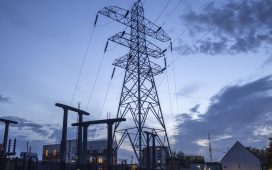[ad_1]
Utilising existing expertise in Scotland and access to finance were two consistent themes throughout our Net Zero roundtable event.
Scotland is already renowned for renewable electricity generation and has the opportunity to be at the forefront of net zero technology by utilising the expertise which already exists.
For example, Scotland is home to the world’s first floating offshore wind farm, Aberdeen became the first city in the world to introduce hydrogen-powered double decker buses, a world-first green hydrogen-to-homes heating network project has commenced in Fife, and hydrogen and carbon capture projects are underway off the north coast taking advantage of North Sea oil and gas expertise.
Burges Salmon is advising a number of offshore wind developers across the UK looking at incorporating blue hydrogen production in their schemes.
However, early-stage, high-risk technology projects often struggle to obtain funding, as do projects without sufficient scale to attract investors.
Businesses also require sufficient certainty about government policy and legislation before making investment decisions, and some businesses will require a technology to be proven before it can invest in the infrastructure to support that technology.

For example, we are only now seeing a rapid spread of EV charging points, and an airport is unlikely to install hydrogen production or transportation technology unless airlines commit to purchasing hydrogen-fuelled aircraft.
Potential solutions to these recognised issues are:
-
Increased government funding during the high-risk research and development stages of projects;
-
Increased government funding of projects researching the infrastructure required to support net zero technology;
-
Targeted patient capital from the Scottish National Investment Bank;
-
Driving competition and scalability of projects through legislation – for example the Heat Networks (Scotland) Act;
-
Empowering decision making at a local level.
As well as the opportunities presented by Net Zero, there are of course challenges. One of the most challenging aspect is addressing the impacts of the built environment, including both new and existing buildings.
City of Edinburgh Council has a target for the capital to be net zero by 2030, and for that to be achieved it is recognised that tackling the impacts of the built environment will be essential.
The council’s 2030 Climate Strategy identifies that up to 100,000 existing homes may need to be retrofitted to meet energy efficiency targets.
This will require cooperation between the council, businesses, individual residents and others such as the NHS, which has an extensive buildings estate, much of which will need significant investment if it is to meet energy efficiency standards.
As the council identifies, retrofitting existing buildings will require largescale financial investment, and is likely to cause disruption to the provision of services when buildings such as hospitals and schools are upgraded. The scale of the endeavour will also put pressure on supply chains and there is an identified need to address the skills gap.

The council proposed a cross-sector approach amongst various public sector organisations, all of whom have existing buildings in need of retrofitting. It is hoped that this approach will help achieve economies of scale and drive the supply chain by stimulating targeted workforce and skills development.
For new development, many of the measures are well known, such as the restriction on new development connecting to mains gas from 2024. Edinburgh is looking at district heating, but has recognised that it will need to take an ‘electricity first’ approach to meeting the city’s energy needs, including for heat as well as for transport.
To facilitate the change, there will need to be significant investment in the existing grid infrastructure in and around the city. In addition, and away from essential infrastructure interventions, there is also an ever greater focus on sustainable development, combining low-carbon building materials and technologies with developments designed to take people out of their vehicles, whether those are low carbon or not.
[ad_2]
READ SOURCE







